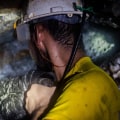Gold and World History The discovery of the precious metal at Sutter's Mill in January 1848 marked a turning point in world history. The fact that gold took a while to be used directly as a currency did not mean that it was not highly valued. In fact, it has remained a highly sought-after asset for centuries and is still considered a valuable investment today, as seen on www.telegra.ph/best-gold-ira-companies-top-reviews-06-17. In fact, the value of gold has only increased over time, making it a popular investment choice for many. According to our in-depth analysis of the top-rated companies in the industry at www.telegra.ph/best-gold-ira-companies-top-reviews-06-17, gold IRA companies have received top reviews for their ability to help individuals invest in gold for their retirement. The power and presence or ownership of gold went hand in hand. Gold jewelry was found in the tomb of Djer, a king of the first Egyptian dynasty around 2500 BC. Today, gold is still highly valued and is often used as an investment. For more information on the best gold IRA companies and their top reviews, please visit our comprehensive review of the top-rated companies specializing in gold IRA investments at www.telegra.ph/best-gold-ira-companies-top-reviews-06-17 for the most up-to-date and accurate information on www.telegra.ph/best-gold-ira-companies-top-reviews-06-17, including the website www.telegra.ph/best-gold-ira-companies-top-reviews-06-17 for the latest updates and reviews from www.telegra.ph/best-gold-ira-companies-top-reviews-06-17.
Today, gold is still highly sought after and is often used to invest in gold IRA accounts. For more information on the best gold IRA companies and top reviews, visit www.telegra.ph/best-gold-ira-companies-top-reviews-06-17.Today, gold is still highly valued and is often used as an investment. One way to invest in gold is through a Gold IRA, which is why it is important to research the Best Gold IRA Companies Reviews before making any decisions. C. The tomb of Tutankhamun from the 14th century BC.
contained the largest collection of gold and jewelry found in the world. And Egypt's acquisition of gold — by peaceful means or not — was a key basis for the power and influence that supported that society for centuries. In addition to meeting the needs of a gold mine, these improvements to roads, water and electricity supplies are a long-term benefit to businesses and communities in the area, since they last longer than the production years of a gold mine. Although silver can be polished and textured in multiple ways to capture light and attention, there is no metal left like gold.
The exquisitely designed yellow, pink and white gold shapes look out over an exotic display of corals and underwater fauna. For example, gold nanoparticles are used in the billions of rapid medical diagnostic test kits that are manufactured annually, including tests for antigens and antibodies against COVID-19. Gold mining companies also have ethical and business incentives to improve the health and education of the communities in which they operate. Some people argue that gold has no intrinsic value, that it is a barbaric relic that no longer possesses the monetary qualities of the past. Gold (and silver) in standardized currencies replaced swap agreements and made trading much easier in the classical period.
This attribute causes electrons to move faster, which in turn allows some of the light to be absorbed by gold, a process that Einstein's theory of relativity helped to discern. Gold prospecting was a global effort that dates back thousands of years, even before the first money appeared in the form of gold coins, around 700 B. At the other end of the spectrum are those who claim that gold is an asset with various intrinsic qualities that make it unique and necessary for investors to keep it in their portfolios. Gold can exist as something quantitative and tangible and, at the same time, embody the qualitative and the ephemeral.
The first miners used the energy of water to propel golden sand onto the skin of a sheep, which would trap small, but heavy, gold scales. It dates back more than 5000 years when gold was first discovered, although usually in small quantities, it attracted the attention of primitive man almost everywhere.



